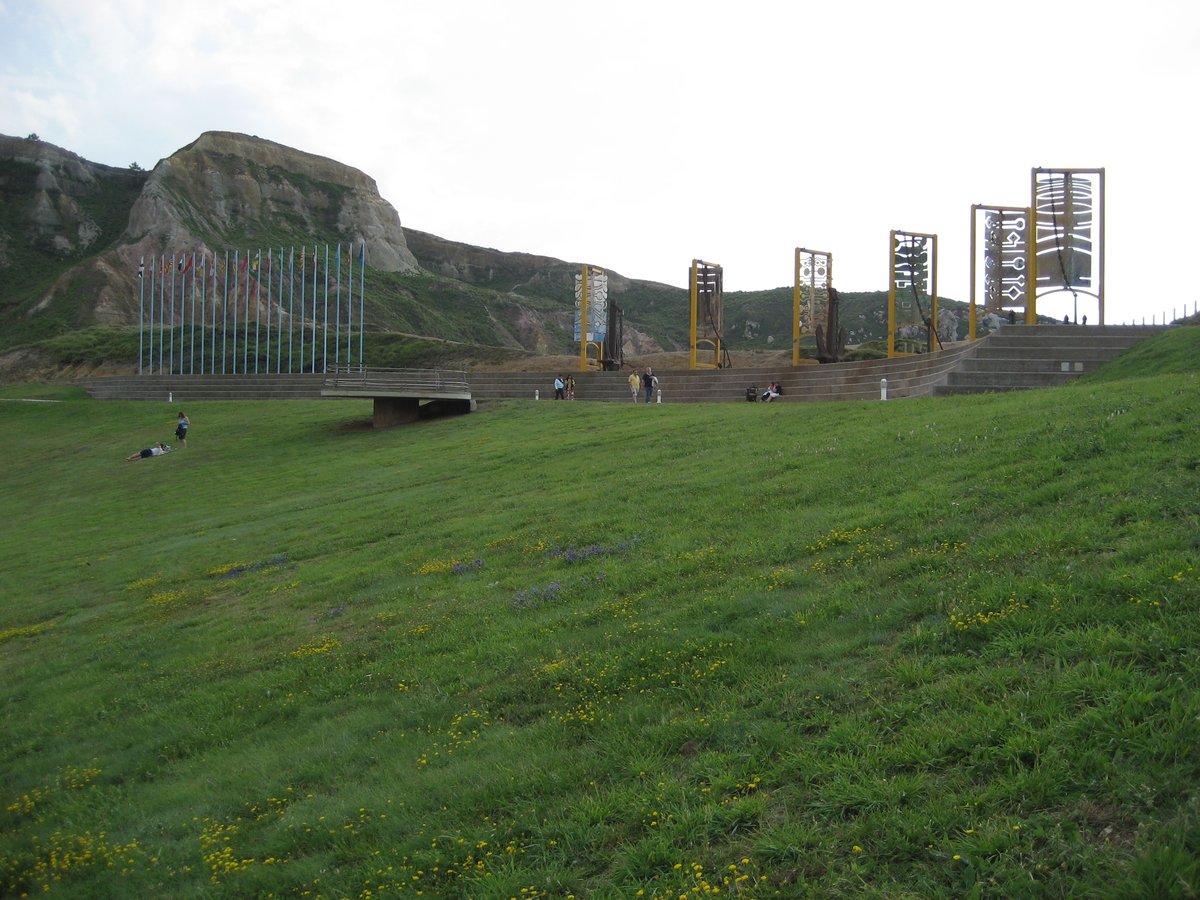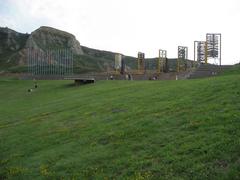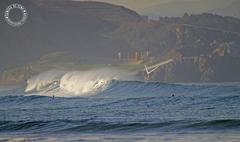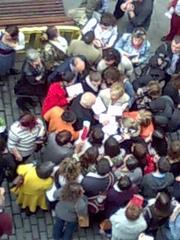
Complete Guide to Visiting Museo de Anclas Philippe Cousteau in Avilés, Spain
Publication Date: 19/07/2024
Introduction to Museo de Anclas Philippe Cousteau
The Museo de Anclas Philippe Cousteau, located in the serene coastal town of Salinas in Avilés, Spain, is a remarkable tribute to maritime heritage and the legacy of the renowned oceanographer Philippe Cousteau. This open-air museum not only showcases an extensive collection of anchors from various historical periods but also offers breathtaking views of the Cantabrian Sea. Philippe Cousteau, born into a family deeply rooted in marine exploration, made significant contributions to oceanic research and environmental advocacy, following in the footsteps of his illustrious father, Jacques-Yves Cousteau. The museum, inaugurated in 1997, stands as a testament to Philippe’s enduring impact on marine conservation and his pioneering spirit in underwater exploration (Museo de Anclas Philippe Cousteau, Turismo Asturias).
Visitors to the Museo de Anclas Philippe Cousteau can immerse themselves in the rich history of maritime navigation through a diverse array of exhibits, from ancient Roman anchors to modern steel constructions. The museum also serves as an educational hub, offering guided tours, interactive displays, and workshops that delve into the science and technology of anchors, making it an engaging experience for visitors of all ages. As a beacon of Philippe Cousteau’s legacy, the museum continues to inspire future generations to appreciate and protect our oceans (Museo de Anclas Philippe Cousteau, Turismo Asturias).
Contents Overview
- Introduction
- Early Life and Background
- Contributions to Marine Exploration
- Environmental Advocacy
- Tragic Accident and Legacy
- Museo de Anclas Philippe Cousteau
- Exhibits and Attractions
- Visitor Information
- Visiting Hours
- Tickets
- Special Events
- Visitor Tips
- Best Time to Visit
- Accessibility
- Guided Tours
- Nearby Attractions
- Continuing the Legacy
- Frequently Asked Questions (FAQ)
- Conclusion
Early Life and Background
Philippe Cousteau, born on December 30, 1940, in Toulon, France, was the second son of the renowned oceanographer Jacques-Yves Cousteau. Philippe’s early exposure to the ocean and marine life was inevitable, given his father’s pioneering work in underwater exploration and filmmaking. Philippe’s upbringing was steeped in the world of marine science, and he quickly developed a passion for the ocean, following in his father’s footsteps.
Contributions to Marine Exploration
Philippe Cousteau’s contributions to marine exploration were significant and multifaceted. He was an accomplished diver, pilot, and filmmaker. His work often involved collaborating with his father on various projects, including the famous television series “The Undersea World of Jacques Cousteau.” Philippe’s role in these projects was crucial, as he brought a youthful energy and innovative spirit to the team.
One of Philippe’s notable achievements was his involvement in the development of the diving saucer, a small submersible designed for underwater exploration. This invention allowed for deeper and more extensive exploration of the ocean’s depths, contributing to our understanding of marine ecosystems.
Environmental Advocacy
Philippe Cousteau was not only an explorer but also a passionate environmental advocate. He used his platform to raise awareness about the importance of ocean conservation and the threats posed by pollution and overfishing. Philippe’s advocacy work was ahead of its time, emphasizing the need for sustainable practices to protect marine life.
In 1973, Philippe co-founded the Cousteau Society with his father, an organization dedicated to the protection and improvement of the marine environment. The society’s efforts have had a lasting impact, promoting marine conservation through research, education, and advocacy.
Tragic Accident and Legacy
Tragically, Philippe Cousteau’s life was cut short on June 28, 1979, when he died in a seaplane crash in the Tagus River near Lisbon, Portugal. Despite his untimely death, Philippe’s legacy continues to inspire future generations of marine scientists and environmentalists.
Philippe’s contributions to marine exploration and conservation are commemorated in various ways, including the Museo de Anclas Philippe Cousteau in Avilés, Spain. This museum serves as a tribute to his life and work, showcasing his achievements and promoting the importance of ocean conservation.
Museo de Anclas Philippe Cousteau
Exhibits and Attractions
The Museo de Anclas Philippe Cousteau, located in the coastal town of Salinas in Avilés, Spain, is a unique open-air museum dedicated to the memory of Philippe Cousteau. The museum was inaugurated in 1997 and is situated on a picturesque cliff overlooking the Cantabrian Sea.
The museum features a collection of anchors from different periods and regions, symbolizing the maritime heritage of the area. These anchors are displayed along a scenic path that offers stunning views of the sea. The centerpiece of the museum is a bronze bust of Philippe Cousteau, created by sculptor Vicente Menéndez-Santarúa Prendes. This statue serves as a poignant reminder of Philippe’s contributions to marine exploration and conservation.
In addition to the anchors and the bust, the museum includes informative panels and displays that provide insights into Philippe Cousteau’s life and work. Visitors can learn about his expeditions, inventions, and environmental advocacy efforts through these exhibits.
Visitor Information
- Visiting Hours: The museum is open year-round. However, visiting hours vary by season. It is recommended to check the official website for the most up-to-date information.
- Tickets: Admission to the museum is free. Donations are welcome to support the maintenance and development of the exhibits.
- Special Events: The museum occasionally hosts special events and exhibitions related to marine conservation and local history. Check the official website for upcoming events.
Visitor Tips
- Best Time to Visit: The best time to visit is during the spring and summer months when the weather is pleasant, and the views of the sea are particularly breathtaking.
- Accessibility: The museum is accessible to visitors with disabilities, with well-maintained paths and ramps.
- Guided Tours: While the museum is self-guided, visitors can benefit from guided tours offered by local experts who provide in-depth information about Philippe Cousteau and the exhibits.
- Nearby Attractions: The museum is located near Salinas Beach, a popular destination for surfers and beachgoers. Visitors can also explore the nearby town of Avilés, known for its charming old town and cultural attractions.
Continuing the Legacy
Philippe Cousteau’s legacy lives on through the work of his family and organizations dedicated to marine conservation. His son, Philippe Cousteau Jr., has continued the family tradition, becoming a prominent environmental advocate and filmmaker. The Cousteau Society, co-founded by Philippe, remains active in promoting ocean conservation and education.
Philippe Cousteau’s life and work serve as a powerful reminder of the importance of protecting our oceans. His contributions to marine exploration and environmental advocacy have left an indelible mark on the world, inspiring future generations to continue the fight for a healthier and more sustainable planet.
Frequently Asked Questions (FAQ)
- What are the visiting hours for the Museo de Anclas Philippe Cousteau? Visiting hours vary by season. It is recommended to check the official website for the most up-to-date information.
- How much are tickets for the Museo de Anclas Philippe Cousteau? Admission to the museum is free. Donations are welcome to support the maintenance and development of the exhibits.
- What can I see at the Museo de Anclas Philippe Cousteau? The museum features a collection of anchors from different periods and regions, a bronze bust of Philippe Cousteau, and informative panels and displays about his life and work.
- Is the Museo de Anclas Philippe Cousteau accessible to visitors with disabilities? Yes, the museum is accessible with well-maintained paths and ramps.
- Are there guided tours available at the Museo de Anclas Philippe Cousteau? Yes, while the museum is self-guided, guided tours are offered by local experts.
Conclusion
The Museo de Anclas Philippe Cousteau offers a fascinating journey into maritime history against the backdrop of stunning coastal scenery. By planning ahead and taking advantage of the museum’s amenities and activities, visitors can enjoy a memorable and enriching experience. Don’t forget to check out nearby attractions in Salinas and Avilés for a complete cultural experience. For the latest updates and more information, visit the official website and follow us on social media.


